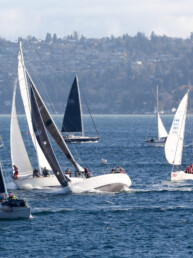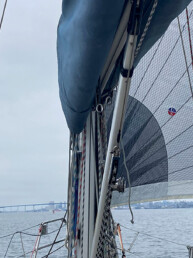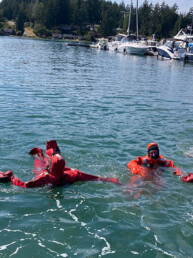I’ve long been proud of the paint job on my boat. At the same time, I’ve also been a little insecure about it. Everything I know about painting I learned from books, chat boards full of opinionated armchair sailors, or my neighbor, a professional house painter — who isn’t a boater. The rest I learned purely through trial and error. When I took my questions to the guys at my local chandlery, they were oblivious to small boats or indifferent to my concerns, so I did my best to figure things out on my own. But there are some things I always wondered about: Is one kind of paint better for the Pacific Northwest than another? And does a small boat really need the fancy, expensive marine paint that goes on a yacht?
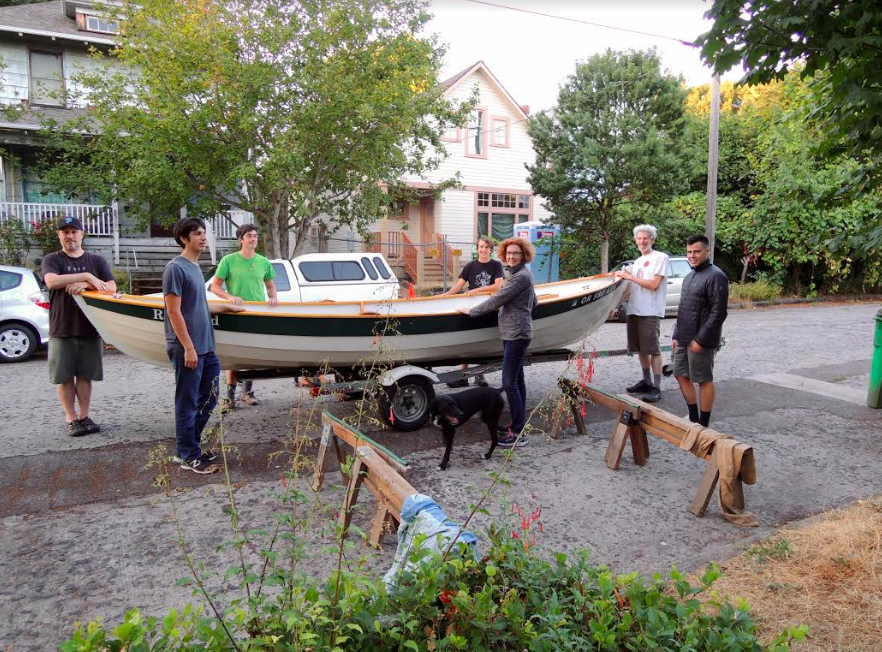
After reading a very approachable painting article focused on big boats in Woodenboat Magazine, I noticed that the author, Peter Marshall, lived and worked on Bainbridge Island — and he was the proprietor of a marine paint company. So I sent a tentative email to Marshall, of Marshall’s Cove Marine Paint, asking if he’d be willing to answer a few questions about small boats. And answer he did.
Pete was born into a family rich in nautical experience and grew up to be a shipwright, constructing and repairing old wooden boats. When his dad’s catboat needed an unavailable shade of paint, Pete began to think about operating a paint company. “We started losing color options among the major manufacturers,” he explained, since they were only producing “what they could make the most money from.”
Pete isn’t a chemist by training, but he elegantly explained how topside paint is made. Simply put, it is a blend of resin that serves as a binder, a solvent to help with viscosity and flow, and pigments for color. Sometimes other chemicals or solids are added for matting or filler. Pete enumerated lots of other details, including his plans for water-based topside paint. (This got me pretty excited, since working with oil-based paint is so stinky.) Apparently, water based paints are good for business, too; they can be shipped more safely and easily than oil-based products.
After learning a bit about his background, and how paint works, we moved on to less arcane topics, like whether paint for Pacific Northwest boats should be any different than paint for boats plying other waters. I was hopeful that Marshall’s Cove would have something special, just for us. Perhaps the northern light might be gentler, or different, than it is farther south?
“UV attacks all finishes,” Pete told me. “Until you get into two-part paints.” UV damage may be worse farther south, he allowed, but the sun is the sun. As for paint specific to the Pacific Northwest, “the desires are different in the Northwest,” Pete said, “not the products.” Apparently we like gloss out here, while folks on the eastern seaboard prefer satin or semi gloss. Who knew? Maybe it’s the rain.
Then I moved on to the question I was most curious about, which turned out to be the easiest to answer: Is painting a small boat really different than painting a big one? “The painting process is the same, but maybe you get to enjoy it more at home,” Pete said. “Its mechanical. You put it on, take it off, mask.”
A topic of occasional lively discussion on small boat forums is what type of paint to use. A few people passionately advocate for house paint, which always seemed dubious to me. In my experience, house paint seems kind of soft and prone to peeling. Pete was more pragmatic. “It’s the cheapest paint possible, not the best. It will work, but you’re not going to get a good finish.” he lamented. “Latex isn’t sandable, and it could be hard to remove or make beautiful. But I’m not against it. Whatever gets you on the water.”
The prevailing logic for dry-stored boats is to use oil-based topside paint above and below the waterline. But if you’re planning a voyage that leaves the boat in the water for days on end, the answer becomes less clear. I once asked a representative from a major manufacturer what to do, and he emphatically told me that if I left topside paint in the water for more than 72 hours, it would start to come off.
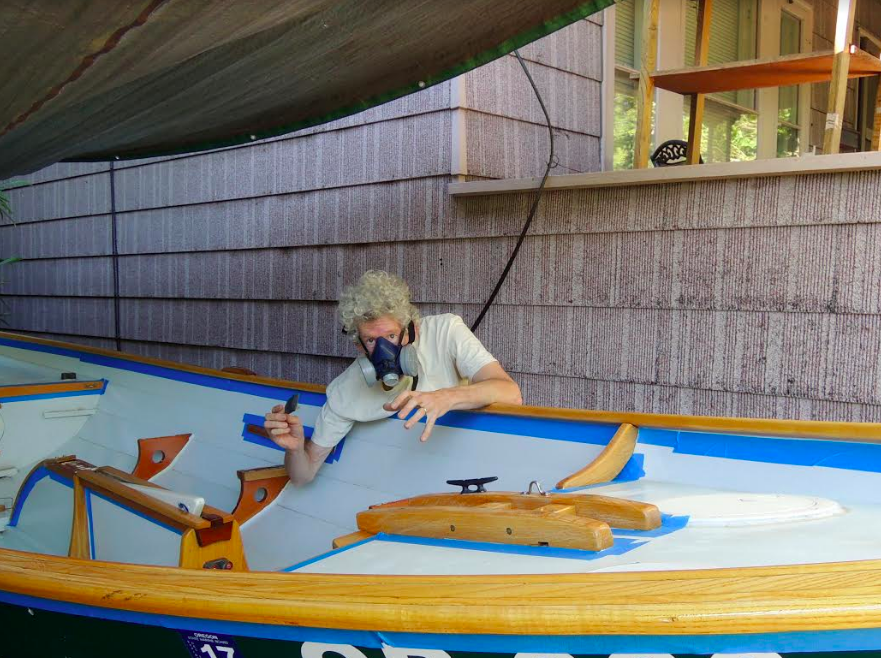
This gave me pause for several years, until I discovered through trial and error that topside paint can sit in the water for weeks without a real issue. Pete didn’t disagree, but still recommended bottom paint for prolonged submersion. “Even oil based paint lets some water through,” he said. On the other hand, he explained, a boat can get “paint sick” (a new term to me), a malady in which too much paint keeps water from getting out, which can cause its own problems.
On aesthetics Pete seemed quite certain. “As a kid looking at boat drawings in old books, boats were black, and that resonated with me,” he said. “I tend to like dark colors.” But whatever your taste in colors, he had a few suggestions. “Keep it simple. Three colors or less. And avoid two that are stark, like black and white. And if you do choose white, go for off white.”
Whether painting big boats or small, Pete said that perspective is what separates a quality job from one that is mediocre. “In a good job, the paint has good adhesion. Beyond that, it’s in the eye of the beholder. It comes down to what you want your boat to look like.”
After talking with Pete, and learning a few tricks, like using Scotch Brite pads to sand between coats, I’m still proud of my paint job and look forward to doing better the next time. Besides using paint made right here in the Northwest, I’ll feel a little less stressed about what I’m using — and focus more on how many ways there are to do it right.
Bruce Bateau
Bruce Bateau sails and rows traditional boats with a modern twist in Portland, Ore. His stories and adventures can be found at www.terrapintales.wordpress.com

